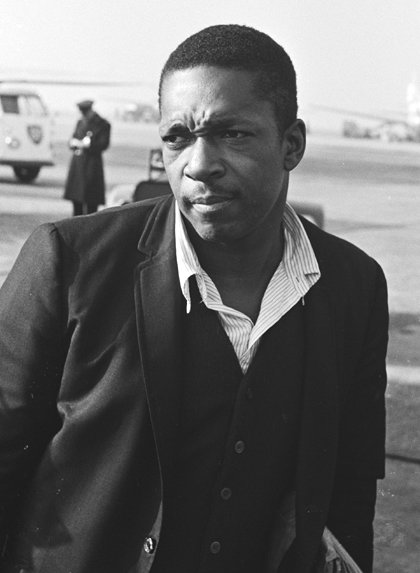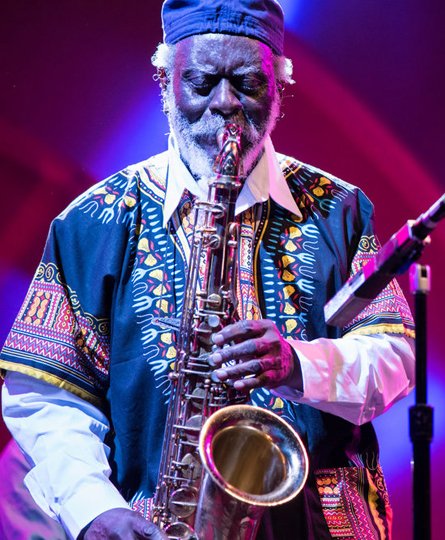John Coltrane and Pharoah Sanders (tenor sax), McCoy Tyner (piano), Jimmy Garrison (bass) and Elvin Jones and Rashied Ali (drums). From the album Meditations (1966).
NOTE
Although the five tracks that make up this album are difficult to listen to, I invite you to at least read the texts, as they contain the biography of John Coltrane, one of the most fundamental musicians in the history of jazz.
Miles Davis, a former drug addict, had given up his habit and earned acclaim at the 1955 Newport Jazz Festival, leading to a contract with Columbia Records and the opportunity to form a regular group. This included himself and Coltrane, Red Garland on piano, Paul Chambers on double bass and “Philly” Joe Jones on drums, and was known as the “first great quintet”. They initially recorded ‘Round About Midnight with Columbia, which wasn’t released until 1957 because Davis had a prior agreement with the Prestige label to record five albums.

John Coltrane
In 1955 he recorded Miles: The New Miles Davis Quintet and in 1956, in two intensive sessions, Cookin’, Relaxin’, Workin’ and Steamin’. In 1957 the band was dissolved mainly due to Coltrane’s heroine addiction. During the second half of the 1950s, Coltrane recorded extensively for Prestige and other record companies as sideman, and taking advantage of his later fame, they reissued the albums in which he had participated, but under his name. In 1957 he also published his first album as a leader for Prestige entitled Coltrane and played with the Thelonious Monk Quartet. In addition, he recorded his second album Blue Train, this time for the Blue Note label.

Pharoah Sanders
DISCLAIMER
This composition is atonal and have neither established harmony nor rhythm, that is, each musician plays to his free will. It’s hard music to listen to, so I apologize in advance to those who may dislike it.
This composition is a continuation of the previous one and starts with Coltrane offering a melodic and conventional solo. His phrases are slow, but they contain great wisdom. Then Tyner enters with a nervous and hurried melodic line supported by his chords, with which he makes short solos in the middle of his exposure. Next Coltrane returns playing in the same way as before. When he concludes, the rhythm section continues to display its dissonances, but gradually they calm down until they end with a final burst.
